SEARCH


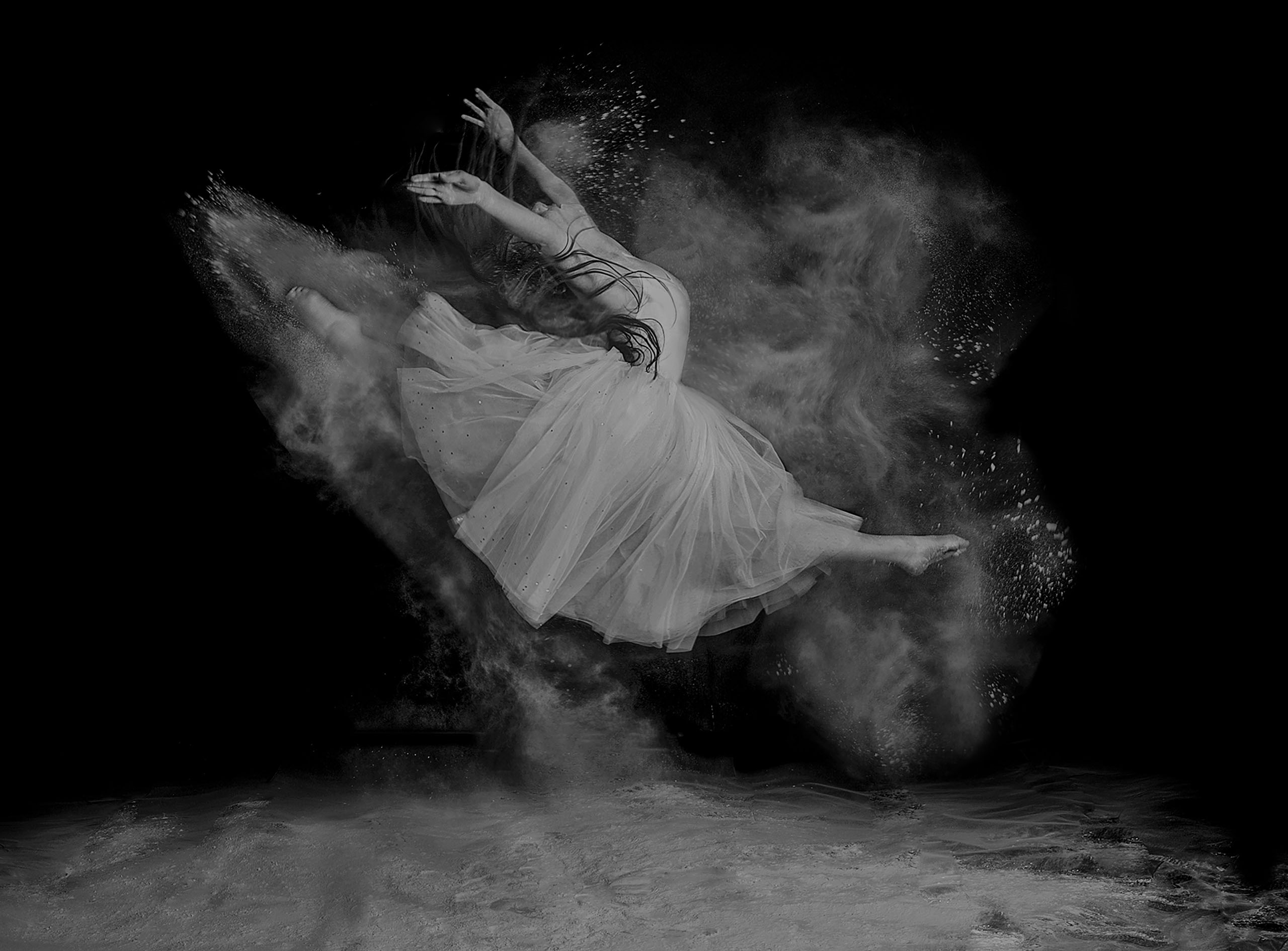
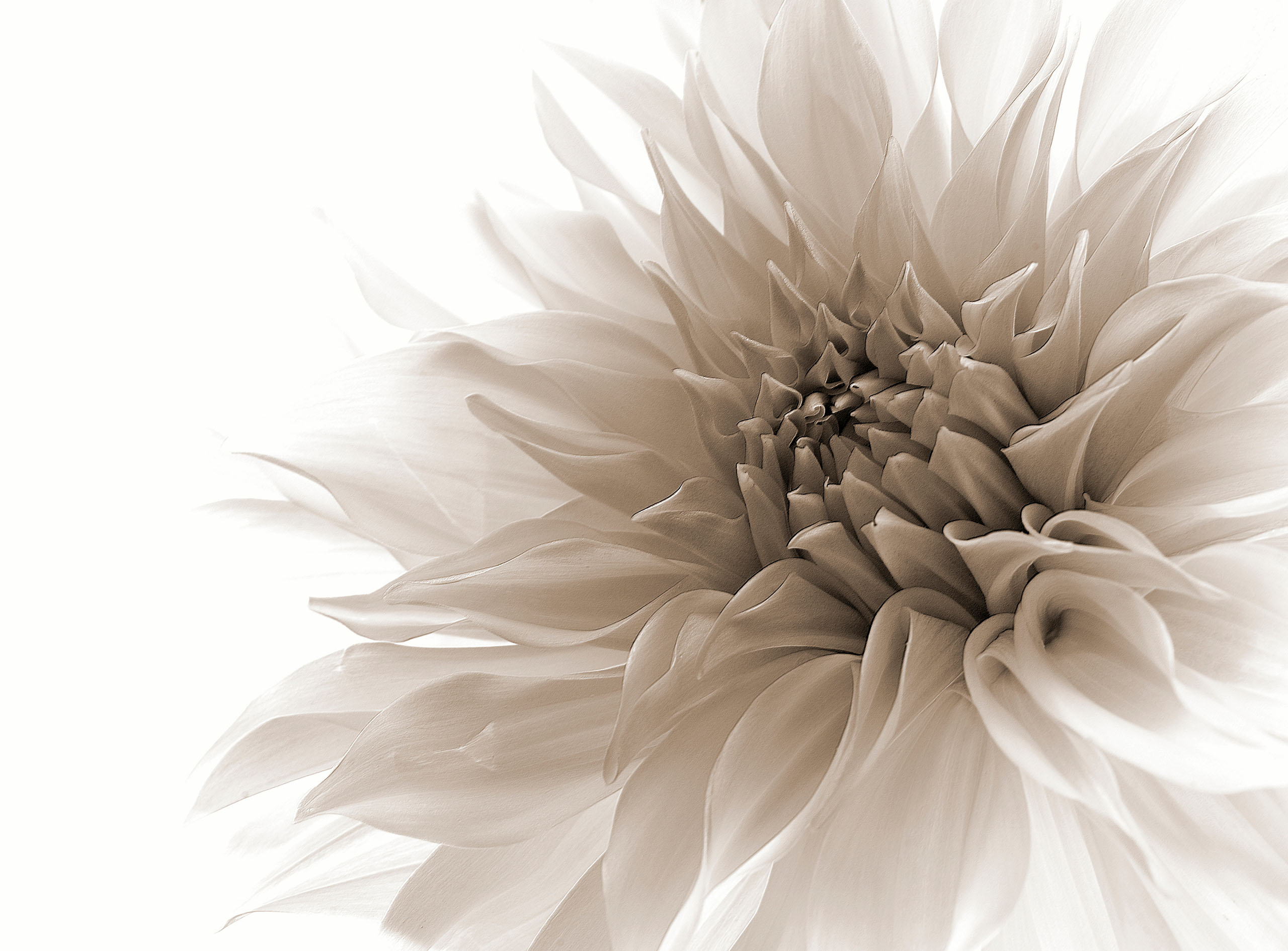

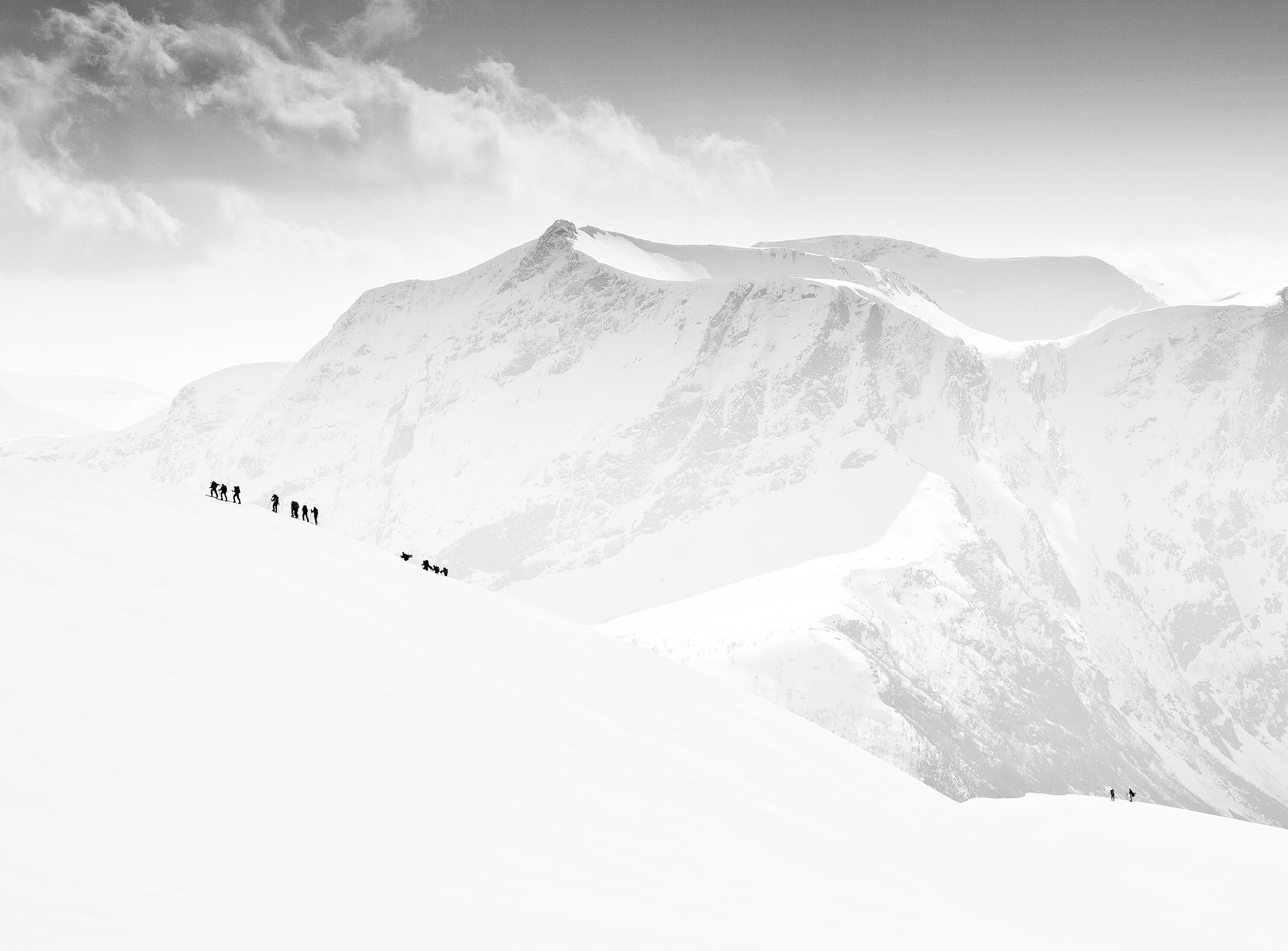
|
|
|
|


by Yvette Depaepe
Published the 18th of August 2025
Emma Zhao strives to capture true moments as they are fleeting. She says: 'The world is constantly changing, and there are so many precious things around us that could vanish forever soon. I want to be one of the people who record them.' To Emma, a good story can transcend the image and touch or move the viewer's soul, and it is this emotional resonance that truly matters in the end.
Join me while wandering through the work of this fine artist and learn more about her through this interview.
'Kayaks in Morning Fog'
Dear Emma, first, I would like to thank you for taking the time to answer this questionnaire. To begin with, could you please introduce yourself briefly and tell us more about yourself, your hobbies and any other projects you are involved in?
It is a great honour to be invited for the interview.
Thank you so much to Yvette and the 1X team!
I was born in PR China, lived in Japan for ten years, and I am currently based in Toronto, Canada. Photography is now more than just a hobby; it is my greatest passion and an integral part of my everyday life. Aside from photography, I enjoy reading and travelling. I don't have any specific projects planned at the moment, but taking photos with my mobile phone is one of my daily activities.
'Sunrise at Tangle Ridge'
When and how did you first become interested in photography?
Looking back, I realised that I had loved reading books with lots of pictures since a very young age. I am a visual person. Photos help me to understand and pick things up quickly. After being a full-time homemaker for a long time, I discovered photography when I got my first iPhone 4S in 2014. It opened up a whole new world for me and made it easier for me to take photos. With my first smartphone in hand, my photographic journey officially began. I have been excited by observing my surroundings, seeing things with an extra pair of eyes (the lens) and taking photos ever since.
'Horses in Fence'
'Walking In a Winter Storm'
For many of us, photography is either a hobby or a way of life. How would you describe your relationship with photography?
As I mentioned earlier, photography is now more than just a hobby for me; it's my passion and my way of life. No matter what I do or where I go, photography always comes first. When it comes to travelling, I always think about what kind of photos I can take there first. Planning the trip, researching local attractions and studying the work of other photographers brings me great joy, happiness and excitement. For me, the enjoyment of photography lies in the process; I am at peace with whatever the outcome may be.
'Hands'
'Girl in White Dress'
What has been the most important experience so far that has influenced your journey in photography?
When I first started out in photography, a friend recommended a landscape photography course by Henry Liu, a famous landscape photographer, even though I had absolutely no knowledge of photography or post-editing. I spent most of the time sleeping in class because I didn’t understand anything the teacher was talking about, and this became a great source of laughter later on. However, the most touching concept that I learned on the course and which has influenced my photography journey is the importance of respecting and protecting Mother Nature, and leaving the shooting location undamaged. This concept has become embedded in my photography and has extended to my favourite genres, such as street and portrait photography. For example, we were advised to find a different composition rather than breaking a tree branch to achieve the 'perfect' one. This idea still moves me whenever it pops up in my mind.
'Mexican Dancing'
'Foggy Sun'
You have your own style, but your work is very diverse. I see splendid landscapes, architectural photography, street photography and photos of animals, among other things. Could you explain why this is?
We live in a diverse world, and I am a free-spirited and curious person. In the early days of my photography, I went out almost every day and took photos of whatever I encountered: animals, trees, shadows, buildings, portraits, landscapes, and so on. This trained my observation skills and taught me how to adjust my camera settings in different scenarios. As I explored different genres, I filtered out my favourites, which are closer to humanity, such as portraits, street photography, architecture, and more. Despite this, I love landscape and animal photography too. From time to time, I plan trips to the wilderness to listen to the wind rustling through the treetops, birds singing around me and the waves hitting the shore. This brings me great relaxation and freedom of mind. Being in nature refreshes my spirit and inspires my creativity.
'Flying Over Tubular Building'
'Yellow Raincoat in the Rain'
Which is more important to you: the mood or story behind your images, or technical perfection?
I think the technical skills are straightforward, which is the easy part – aperture control, exposure balancing, focus calibration, and so on. Many of us, myself included, are captivated by the pursuit of visual poetry in our frames. To me, a good story can transcend the image and touch or move the viewer's soul, and it is this emotional resonance that truly matters in the end. Often, we press the shutter because the moment touches us. Photos that move us are more likely to make an impression on viewers.
'Pine Marten in Snow'
'Listen to me, Hon'
What is your relationship with your subject matter beyond simply observing it?
Do you carefully prepare the locations where you intend to take photographs?
For example, I believe that a successful portrait shoot starts with careful observation and effective communication, and continues with mutual understanding. Locations and timing are well planned, and a plan B is prepared in case of any unforeseen circumstances. I also prepare more details and extra options, even though they might not be adopted. Often, I also trust my instincts, improvise, and make changes to the plans.
For general, casual photography, such as street photography, I prefer a more flexible approach. I can change my pace when something catches my attention. There are always surprises on the street, which is exactly why I love street photography. For landscape and wildlife photography, I usually join a group of friends and go with them for fun.
'Playing In the Yard'
'3:30pm at Union Station'
Describe your overall photographic vision.
I would like to capture true moments as they are fleeting. It may be a decisive moment. The world is constantly changing, and there are so many precious things around us that could disappear forever soon. I want to be one of the people who record them.
'Hats Vender'
'Tall Book Shelf'
Could you tell us more about your workflow, from idea to final product?
I have two systems for my workflow.
When travelling or doing street photography, I usually use my mobile phone, and I now also use it for portrait photography if the light is good. The advantage of using a mobile phone is that I can select and edit photos on the phone and post or send them right away. I use both the built-in editing functions on my phones and the Snapseed app. Photos that need more extensive retouching in Photoshop have to wait until I get home.
When shooting events, performances and animals with my large mirrorless camera, I usually delete any unwanted photos on the camera before uploading them to Lightroom. In Lightroom, I rate and edit the photos as necessary. Some photos will be exported directly; those that need more detailed retouching will go through Photoshop. I intend to reduce the time I spend on post-production in PS because it’s so time-consuming.
'Walking Up on Stairs'
'Lines on Street'
Where do you look for inspiration, and what inspires you the most?
In the early days of my photography career, I joined various social media sites, such as Instagram and 500px. I followed many great photographers on YouTube and taught myself most of what I know. I also entered some competitions for fun. Since joining 1x.com a few years ago, it has become my go-to platform every day. I like the site, with its simplified navigation and high-standard images. When I was stuck, browsing the beautiful images, curating photos and reading the magazine really helped and inspired me to move forward.
'P.B.L. Building'
'A Photographer under a Museum'
Many people believe that gear is not very important when you are passionate about photography. However, could you please tell us what equipment you use (camera, lenses, lighting, tripod, etc.)?
I started out in photography using my iPhone 4S. Over the years, I have used the iPhone 6, iPhone 8 Plus and iPhone 12 Pro, and I am currently using the iPhone 16 Pro. iPhones are still my first choice for most of my daily photography, such as street, still, macro, food and portrait photography, as well as video recording. Since starting a mobile photography class with photographer Sean Huang in 2020 to familiarise myself with the Android system, I have also purchased a Vivo X100 Pro. These mobile phones are my most-used cameras. When I go out to take street photographs, I sometimes take a Sony RX100VII with me as a backup. I absolutely prefer travelling light.
As for heavy equipment, I have a Sony a7 III and a Sony a7 IV with Sony 16-35 mm F4, Tamron 35-150 mm F2.8 and Sony G 200-600 mm F6.3 lenses to cover all common uses, from landscapes to wildlife. My tripod is from FLM. I have a few lights for portrait photography, but they are only used indoors. Most of the time, I prefer to use natural light for portraits. I also have a DJI Mini 2 drone.
I am not particularly interested in equipment, and I try to make the best use of what I have.
Which photo is your favourite? Please tell us the story behind it.
Of all the photos I have taken, there are a few that stand out as my favourites. Nevertheless, this photo, titled 'Harbor', remains close to my heart.
'Harbor'
This minimalist image was taken during a photography tour in Banff, Canada in December 2021, during the pandemic. It was snowing heavily on the day we went out to Bow Lake, with waist-deep snow and buried roads. Strong winds blew through the trees and blurred our vision. Visibility was so low that the team members had to stay close together. We walked very slowly in our snowshoes to find our way back. Suddenly, I noticed a tiny tree behind a ditch. The wind had formed a shelter around the tiny tree, embracing it like a safe home. It immediately warmed my heart. It reminded me of the lockdown that year, and it saddened me that we were unable to go back and see our families. It was just before Christmas, so the photo touched my heart every time I looked at it. It took me back to that snowy day, that memorable tour and all the winter 2021 memories.
Which photographers or mentors have influenced you and your photography, and why?
There are so many photographers whose work I love and respect. Landscape photographer Henry Liu had a significant early influence on my photography, teaching me the importance of being true to and respectful of nature, yourself and others. Photographer Larry Deng sparked my interest in post-production; his artistic works are a constant source of inspiration for me. I love Henri Cartier-Bresson's work because it gave me a new perspective on street photography and inspired me. My local photographer friend, Molly Fu, is also a big inspiration to me; her rapid progress has really motivated and encouraged me.
'After Snowing'
'After Raining'
Now that we are almost at the end of this interview, could you please tell us about any photographic projects you would like to be involved in?
I started a portrait collection during the pandemic but then paused it for years. I should probably reopen the file, as there are so many countries and places I would love to explore. Time is ticking; plans must be made. For now, I will focus on local events and keep taking photos.
Is there anything else you would like to add, and what do you think about 1X as a home base for your work?
1X is actually the only platform I visit daily; it has truly become a home to me. The images displayed on 1x are of exceptional quality and deeply motivating. I have learnt so much from 1x.com over the years.
I would like to thank the 1X community for being a remarkable source of inspiration and a platform for learning and sharing. I would also like to thank Yvette again for providing me with the precious opportunity to share my work and experience.
 | Write |
 | Charlotte Zhang PRO Amazing art works! I enjoyed your photos very much! I took your photography class for mobile phones a few years ago and would like to take this opportunity to say "thank you". |
 | Yaping Zhang PRO 恭喜亲爱的艾玛老师,您杰出的艺术作品,令人刮目相看!出类拔萃的优秀摄影师。 |
 | Ruiqing P. PRO I also truly admire the way you transform ordinary subjects into extraordinary works of art. Congratulations dear Emma! Thank you, Yvette, for yet another inspiring interview! |
 | Bing Li PRO Very impressed work, full of spirits and stories, Thanks you and congratulations. |
 | Sonya Liu PRO Congratulations for your amazing work, dear Emma! You deserve it! Thanks Yvette for great interview and collection! |
 | Xiaolin Ni PRO Congratulations my dear friend Emma! I just love and admire your ability to turn ordinary subjects into extraordinary art work! Thanks Yvette for another inspiring interview! |
 | Yanyan Gong PRO Congratulations dear Teacher Emma, well-deserved! A beautiful collection of your outstanding and diverse work! Thank you very much, Yvette, for this candid interview! |
 | Fan Lin PRO Congrats my df Emma! You deserve it! Many thanks to Yvette for great interview and collection! |
 | Frank Bruynseraede PRO Great series ! Congratz ! |
 | Louie Luo PRO Your great images are a beautiful reminder of the world we live in. My warmest compliments, dear Emma! Many thanks to Yvette for another wonderful interview! |
 | Dennis Zhang PRO Excellent works, Congratulations! |
 | Dazhi Cen PRO It is excited to see these wonderful works. You are a versatile photographer! |
 | Larry Deng PRO Congrats df Emma for your beautiful works and thanks as always, dear Yvette for the the interview. |
 | Wendy Liao PRO Emma shines not just as a photographer, but as a mentor. With Sean Huang, she’s inspired many to turn passion into visual storytelling. Wonderful interview—thanks, Yvette! |
 | Wenjin Yu PRO So beautful works, congratulations! |
 | Molly Fu PRO Great collection of images, excellent photographer, congrats mdf Emma, you deserve it!!! |
 | Ying Zhang PRO Emma is a soulful person with special quiet spirit. She has been a role model for many growing Chinese women passionate photographers. She is a modest and open-minded teacher as well. |
 | Elizabeth Allen CREW Congratulations on this wonderful interview and superb collection of images showing so much diversity, Emma. Thanks as always, dear Yvette, for the article. |
by Editor Lourens Durand
Edited and published by Yvette Depaepe, the 16th of August 2025
'picudo rojo macho' by Javier Rupérez
Macro photography reveals a hidden world of the natural environment, showcasing intricate textures, vibrant colours and larger-than-life details. Nature photography subjects are all around us: flowers, insects, leaves, feathers and water droplets reveal textures and patterns that would otherwise remain hidden.
To capture these images on camera, you will need special equipment and to learn some new techniques.
· Macro Lenses: Dedicated macro lenses give the best results.
· Lighting: Natural sunlight is the best, but diffused speed lights or ring lights can help in less than perfect lighting conditions.
· Tripod: Using a tripod or mono-pod is essential to minimise camera shake.
· Focus Stacking: A series of images taken at different focus points, and assembled later in post processing
Focus Stacking in Detail
Focus stacking is a powerful macro photography technique that allows you to achieve a wide depth of field in extremely close-up images, with everything from the foreground to the background fully focused and pin-sharp. This reveals hidden details that the naked eye misses.
In practice, it involves capturing multiple images at different focal points within the subject's depth, followed by processing them with software to create a single, sharply focused image. This technique can reveal the fine veins on insects' wings, the detailed textures on plant surfaces and the water droplets on pollen grains with increased clarity, highlighting their structures.
While it is true that single-shot close-ups of insects and similar subjects with soft foregrounds and backgrounds can add an artistic touch to a photo, there is a lot to be said for images that are pin-sharp throughout.
The process of focus-stacked macro photography involves taking a number of photographs with a shallow depth of field and combining them in post-processing to create a sharp image.
While some cameras can perform focus stacking in-camera, many photographers prefer to have total control over the process.
Firstly, you need a camera with a macro lens with a focal length of around 100 millimetres, which allows ultra close-up photography. As the process is highly sensitive, it is essential that the camera is mounted on a steady tripod.
Lighting is also extremely important; natural sunlight is ideal, but a diffused flash or ring lights will work well too.
Take a series of photos at different focus points (this method obviously only works with stationary subjects). Use a small aperture to achieve sharpness at each point.
Although it incurs an additional cost, using a focus rail attached to a tripod offers a clear advantage. A focus rail is an invaluable accessory for greater control and precision. It enables the camera to be moved forward and backward in small increments by simply turning a knob.
Details of use:
· Mount your camera and lens on the rail
· Compose your shot, ensuring the subject is within the frame
· Set the focus point, typically on the closest part of the subject
· Take the first shot
· Slightly shift the focus rail a bit away from the camera
· Repeat the process until the entire depth of the subject is covered
· Process the photos, as shown below.
The normal rules of photography apply:
· composition is important - use leading lines, the rule of thirds, symmetry, patterns, and textures
· watch out for the background - ensure that it is not cluttered and that there are no bright spots to spoil the picture
· fill the frame as far as possible – saves on cropping later
If you can take your subject indoors, try using studio lighting and a light box to enhance it. This is not confined to insects and flowers – you can use it for model cars, aeroplanes, and anything else you can shoot.
Just a note: if you shoot in RAW, your files will be exceptionally large during the processing stage. Therefore, it might make sense to shoot in JPEG or convert to TIFF files beforehand.
The real fun starts when you begin processing the photos! Although there is special software available for this, such as Helicon and Zerene, you can also use Photoshop, which gives you a deep sense of satisfaction from having total control over the process.
First do the normal post processing operations like contrast, sharpening, lighting, and so on.
Then for manual blending in Photoshop:
· open all the images in Photoshop
· load all the files into one stack
· select all layers
· auto align all layers
· auto blend all layers
· flatten the image and do any final cropping and adjustments
· and voila!
Conclusion
Macro photography of nature offers photographers a different perspective on learning to see more, being creative and looking for details, as well as teaching them patience.
Please enjoy this selection of macro masterpieces by photographers from 1x.com.
'No Two are Alike' by Liza Rock
'Black Head' by Aditya Permana
'Yellow Jacket' by Aditya Permana
'Dewy Anole' by William Banik
'Symphony unfinished...' by Thierry Dufour
'Pasque' by Mandy Disher
'Swallowtail' by Jimmy Hoffman
'Dew Bells' by Jacky Parker
'Blue Rays' by Þorsteinn H. Ingibergsson
'Show Time' by Hasan Baglar
'Whiskered' by Alexander Zubrickij
'Coenagrion puella' by Dusan Beno
'Stinkbug HR' by Lourens Durand
'Alien' by Alexander Zubrickij
'The Beauty of a Small World' by Abdul Gapur Dayak
'Saltamontes' byJimmy Hoffman
'Our World' by Fauzan Maududdin
'Good night' by Francois Casanova
'He dreams of being an astronaut...' by Thierry Dufour
'The Wave' by Wil mijer
'Silk Transparency' by Marl1
'Scrooge' by Alexander Zubrickij
'Bee on Aloe HR' by Lourens Durand
'Antlion' by Summer2016
 |
 | Yaping Zhang PRO 漂亮的宏,精美绝伦!恭喜并且感谢 Yvette 和 Lourens的精湛文章 |
 | Thank you very much Yvette and Lourens, all the best !!! |
 | Shriyan San PRO Excellent work 👍 |
 | Summer2016 PRO Thank you very much, Shriyan! |
 | Indeed, an amazing world most of us cannot reach. Incredibly creative. |
 | Summer2016 PRO Many thanks Francisco! |
 | Wonderful collection of excellent macros. Very useful text. Congratulations and thanks for this article Lourens and Yvette! |
 | Yvette Depaepe CREW Our pleasure, Francisco! |
 | Summer2016 PRO Thank you very much for your kindness words. I am really appreciated. |
 | Extraordinary beauty in this gallery of macro shots! Thanks Yvette and Lourens! |
 | Yvette Depaepe CREW All credits go to Lourens and the authors, Ludmila ;-) |
 | Fred Louwen PRO Many thank for these yealous making suburb macros. |
 | Thierry Dufour PRO Many thanks Yvette and Lourens, best regards !!! |
 | Yvette Depaepe CREW Thanks for your appreciation, Thierry! |
 | Miro Susta CREW Excellent introduction to macro photography complemented by marvellous photographs, thank you Lourens, Yvette and all photo creators. |
 | Yvette Depaepe CREW Thanks dear Miro! |
 | Excellent macro photos, incredible works |
 | BruceNi PRO Very wonderful photos and helpful notes . Thanks for sharing! |
 | Lucie Gagnon CREW A wonderful selection of superb macro photographs! The details and composition are excellent. And the photographers are awesome too! Thank you for the inspiration! |
 | Elaine Henshaw PRO Fabulous images |
 | Dazhi Cen PRO so Cute!!! |
 | Atul Saluja PRO Stunning in every way!!! Congratulations to all published |
 | Stunning images with exquisite technique and composition.
Congratulations. |
 | Izabella Végh PRO Grazie mille questo bellissimo articolo. Le fotografie sono eccezionali. Da guardare più volte per scoprire i piccolissimi particolari della nostra natura meravigliosa. |
Exhibition by Rob Darby
Edited and published by Yvette Depaepe, the 14th of August 2025
'EXHIBITIONS' are a powerful tool to create online exhibitions with your photos.
You can add quotes, change the order of your photos and align them in different ways and change the size. Just like a gallery curator arranging prints on the walls of an exhibition you can do the same. The landing page on your profile is an exhibition which you can customize, you can also add more exhibitions and decide which one should be your landing page.
A succesful exhibition will be published on a regular base, in the magazine.
You can present some of your favourite exhibitions by adding text – stories or quotes – to make them even more attractive and to be selected. Maybe the next one will be yours.
Today, I like to present you an exhibition titled 'The Sensualtiy of Nature' by Rob Darby.
Rob quotes: This exhibition is my homage to the sensuality of nature’s shapes. I am drawn to geometry and the curves of forms that seem to find their way into my photography.
You can view the complete exhibition here: [578] Rob Darby
To trigger your curiosity, a small selection of images ...
 |
 | Miro Susta CREW Wonderful photo gallery, congratulation Rob, excellent selection many thanks Yvette |
 | Imi Koetz PRO Magnificent works !! |
 | Dazhi Cen PRO Excellent pictures. |










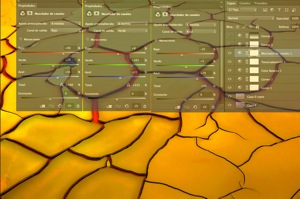


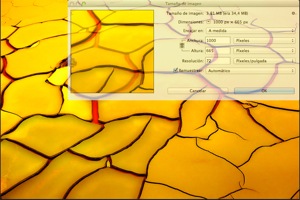



 |
By Editor HJ Yang
Edited and published by Yvette Depaepe, the 11th of August 2025
'Ice roots'
Daniel Kordan is a world-renowned landscape photographer and explorer. Having discovered his passion for photography and travel at a young age, he now spends his time sharing his vision and the many wonders of the world with people all over the globe, particularly within the photography community, through his unique programs and his own photographs.
His work has been published in Digital SLR Magazine (UK), Photography Week, Photography Masterclass, National Geographic, Discovery, and Photoworld China magazines, as well as Bauer Media's Digital Photo. He is an official Nikon and Gitzo ambassador. He is currently based in Bali, Indonesia, but also spends time in Norway on the Lofoten Islands and in Tuscany at his Villa Gaia, where he guides groups from Europe, the UK, the US and Asia.
Visit his website at https://danielkordan.com to view his images and programs.
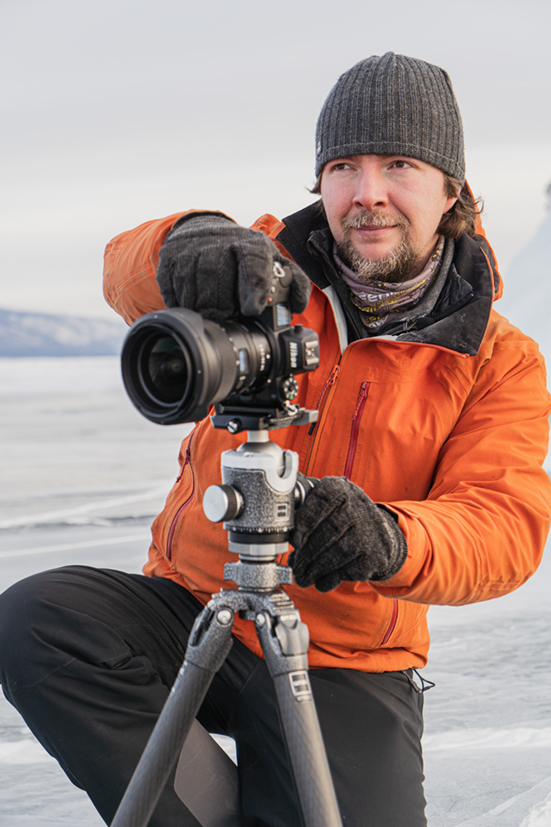
In February, I had the opportunity to join his inaugural Antarctic Red Sail programme, during which we spent ten days together. As it turned out, we had both studied physics at university and worked as scientists at the start of our careers. It is our shared passion that led us to become explorers and nature photographers.
Hello Daniel, I am honoured and pleased to be coming to Antarctica with you for your first Antarctic Red Sail program. This is your seventh trip to Antarctica and my fifth. This year also marks the tenth anniversary of your Arctic red-sail program. Congratulations on the successful completion of your ten-year Arctic red-sail program and your first Antarctic red-sail program. Your unique programs and photographs have attracted and touched the hearts of many people all over the world, including many in our 1X community. Thank you for your contribution to our photo art community, and for making this interview possible.
How did you get into photography?
I grew up in a small town around 75 miles from Moscow, surrounded by dense forests and crystal-clear lakes. From the age of six, I attended a local art school, spending six years mastering drawing, colour theory and composition. It was during those evening painting sessions, capturing the soft glow of the sunset on pine needles, that I developed a lasting appreciation for the way light can shape mood.
In my teens, I stumbled upon an old Kiev film camera. I would sneak away after classes to photograph the mist rising off the lakes at dawn. Developing those rolls in a makeshift darkroom taught me patience; you learn to wait for the moment when the light unfolds and to embrace surprises, such as a single frame ruined by a light leak that serendipitously captured a haunting sunburst. By the time I was 16 or 17, I had saved up for a second-hand DSLR.
Before becoming a full-time photographer, I studied physics at the Moscow Institute of Physics and Technology (MIPT). This scientific approach to understanding nature helped to shape my observational skills and discipline, which I later applied to photography. There was also a strong mountain climbing community, which I first joined as a guest and later as a guide.
Ultimately, my passion for landscape photography became stronger than my academic path, and I transitioned from science to art, blending logic and creativity in my work.
Who were your influences when you first started out as a photographer?
Art school mentors: My drawing teachers emphasized 'seeing in values', which later manifested as an obsession with dynamic range in my images. They also taught me not to be afraid of colour.
Ansel Adams: I learnt from his Zone System to expose for the highlights and pull detail from the shadows.
Galen Rowell: His blend of adventurous spirit and technical expertise showed me that to take great photos, you have to go the extra mile — and sometimes climb higher — to capture the perfect light.
Contemporaries: paintings by Monet, Caravaggio, Renoir
As my career progressed, guided assignments for National Geographic and Red Bull exposed me to photo-essay storytelling and commercial workflows, further diversifying my influences.
'Red Sails'
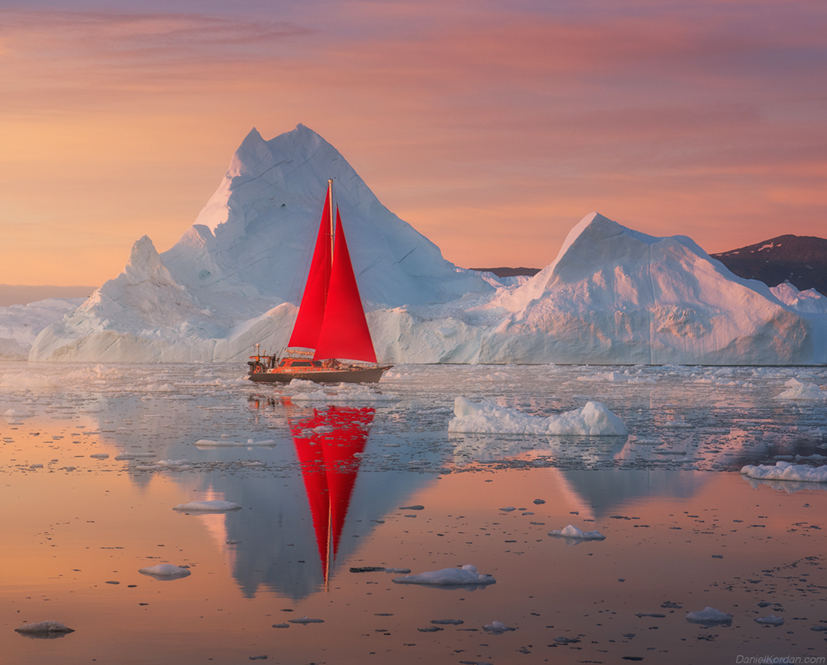
How did your unique red-sail programme begin?
In July 2015, I was leading an expedition in West Greenland when we decided to demonstrate the size and scale of the icebergs by introducing the striking contrast of red sails. The sails, like a brushstroke on a white canvas, felt like a vivid graphic element and a metaphor for the rising sun, and they even reflected the colours of the Greenland flag.
I approached the captain of a boat, discussed chartering it for a dedicated photo voyage, and by the next season, we had outfitted it as our 'moving studio'.
Since then:
Signature motif: The red sail appears in dozens of compositions, framed against glaciers, backlit at dawn and trailing colourful reflections in the calm waters of fjords.
Collaborative vessel: Working alongside local Greenlandic crews has deepened my respect for their indigenous knowledge of ice navigation. The key here is investing in local hotels and restaurants and supporting local guides.
Anniversary milestones: Over the course of ten seasons, we have refined our schedule to include shoots at midnight, iceberg calving sessions and reviews on deck under the midnight sun.
What is it that makes this program so successful?
Purposeful small groups
A maximum of 8–12 photographers ensures personalized tuition.
We assign two guides per group: one to provide technical support (camera settings and composition) and one to oversee safety and logistics.
Agile sailing logistics
Unlike larger ships, our sailboat can navigate narrow, ice-choked channels.
On calm days, we drop anchor directly beneath 200-metre-high ice cliffs to enjoy a dramatic view. Instead of sleeping on the boat, you will stay in 4-5 star hotels.
Creative community
There are daily evening 'image critiques' in the conference rooms.
Participants are invited to lead themed 'challenge shoots' (e.g. abstract ice textures or portraits of local Inuit guides), fostering peer learning.
What was the most challenging aspect of your photography experience?
Weather volatility: One afternoon, I watched our entire deck and line freeze into ice, which can be cold, but it makes for a great escape from the summer heat.
Psychological endurance: Polar landscapes demand stillness. Maintaining high spirits during long whiteouts is as much a leadership challenge as navigating ice floes.
Sleepless nights during the midnight sun.
What do you enjoy most about photography and leading photo tours?
Moments of shared awe:
Witnessing someone’s first iceberg calving, for example, when a thunderous crack splits the silence and they capture it perfectly in the frame, is as thrilling for me as seeing the full moon rise over the red sails, with whales breaching around and magical golden light all night long.
The midnight sun, for example, is four to five hours of endless sunset flowing into sunrise.
Creative sparks:
Seeing a beginner adjust their composition on the fly — for example, moving three steps to the left to include a reflection of a red sail — and take an award-winning shot gives me immense satisfaction.
What makes your photography unique?
Painter's sensibility:
My background in art school drives me to craft images with harmonious colour palettes.
Adventure-driven content:
I don't just document landscapes; I embed human narratives, such as the red sail, local crews and tribe gatherings, into the natural story.
I love finding unique projects that have never been done before, such as photographing amazing phenomena like fireflies in Japan or glowworms in New Zealand.
This blend of unique phenomena and raw expedition energy is what sets my work apart.
Tell me more about yourself. How has your personal experience influenced your photography?
Rural upbringing:
Growing up close to nature meant that I developed an instinctive understanding of weather patterns, which I still rely on when deciding when to take photos.
Art training:
Six years of classical painting taught me to see the relationships between lines and forms, which is critical when framing icebergs so that they echo the triangular peaks of the mountainous backdrop.
Professional partnerships:
Working with brands taught me the importance of precision in post-processing, while collaborating with National Geographic instilled in me a sense of narrative depth. Shooting for Red Bull, on the other hand, pushed me to capture the visceral nature of extreme sports.
Long-term projects:
My 'Two Poles' yachting expedition, which took me from Saint Petersburg to Antarctica via Svalbard and Greenland, was both a logistical odyssey and a creative laboratory for exploring new visual themes such as polar nights, auroral patterns and sea-ice drift.
How do you balance family life with your professional commitments?
It's always challenging to balance family and professional life, especially with a career that involves constant travel. I plan my photo expeditions in advance to ensure I spend quality time at home between trips. Whenever possible, I bring my family along and turn some of my assignments into shared adventures. The key is to stay connected and be present, even during the busiest times. They really enjoyed the Komodo cruise in Indonesia and staying in nice resorts with my groups. Moreover, it's a great way for kids to learn from their parents' passion.
How do you adapt current AI technology?
I use it to organize client lists and emails, as well as announcements. Apart from AI masks and noise reduction, I don't use it in photography. My philosophy is not to add elements that did not belong in the original scene.
In your opinion, how will AI affect photography, both as a practical skill and as an art form?
AI will automate routine tasks such as noise reduction, tethered-capture previews and basic edits, freeing photographers to focus on the creative aspects of their work, such as mood, composition and storytelling. However, the essence of art remains human: the choice of subject, light and timing. I see AI as a co-pilot that enhances image quality as we originally envisioned it, not as a replacement. The photographers who succeed will be those who balance technology with a personal voice and an original, non-destructive approach to nature.
What advice would you give to beginner photographers?
Study light as a craft.
Keep a 'light journal' in which you note down sunrise times, cloud patterns, wind directions and the lens used. Over time, you will see patterns that will help you identify the best times to take photos. Use apps such as Photopills and Windy to help with planning.
Get to know your gear intimately.
Practise changing lenses, filters and settings while blindfolded. In extreme environments (e.g. cold, wind or rain), you must be able to work without looking. Use a drone to capture new perspectives.
Embrace patience.
Set up a time-lapse for hours and let the natural movement reveal compositions that you might never see at first glance. Go to wild places and wait for epic light.
Build narrative depth.
A single landscape can be beautiful, but adding context, such as a guide’s silhouette, a tent in the snow or a red sail in the distance, can turn it into a story. It's best to add the value of local communities and traditions.
Join a community.
Taking part in critique circles, either online or in person, will help you to develop your skills faster than practising alone. I owe much of my growth to the feedback I received from fellow artists.
Trust local guides, connect with local photographers and support them. Local knowledge is the key to unlocking every door outside your comfort zone.
Thank you very much, Daniel, my dear friend, for taking the time to do this interview and share your personal experience with me. I am looking forward to joining you on your future photography programs and seeing your many more unique and wonderful works. Good luck with all your future endeavours.
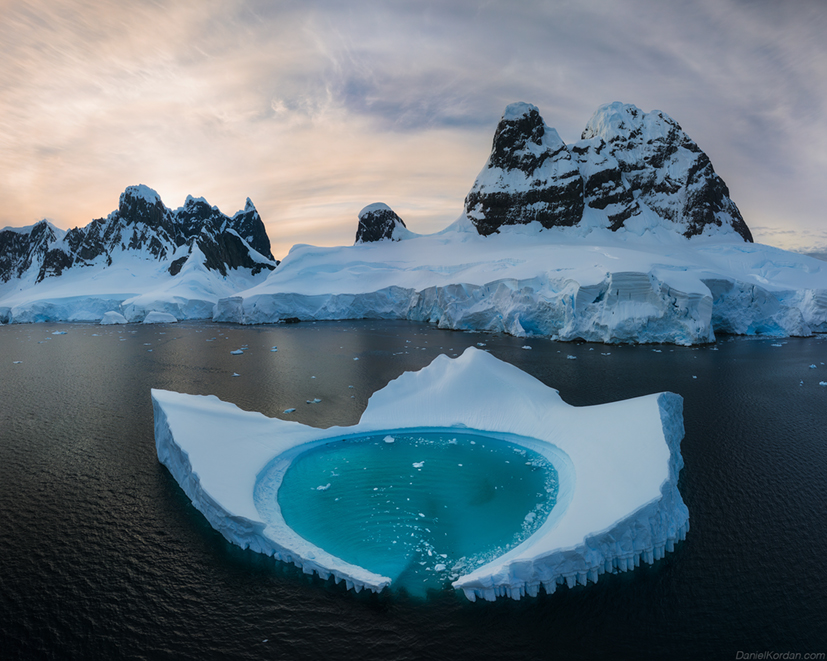
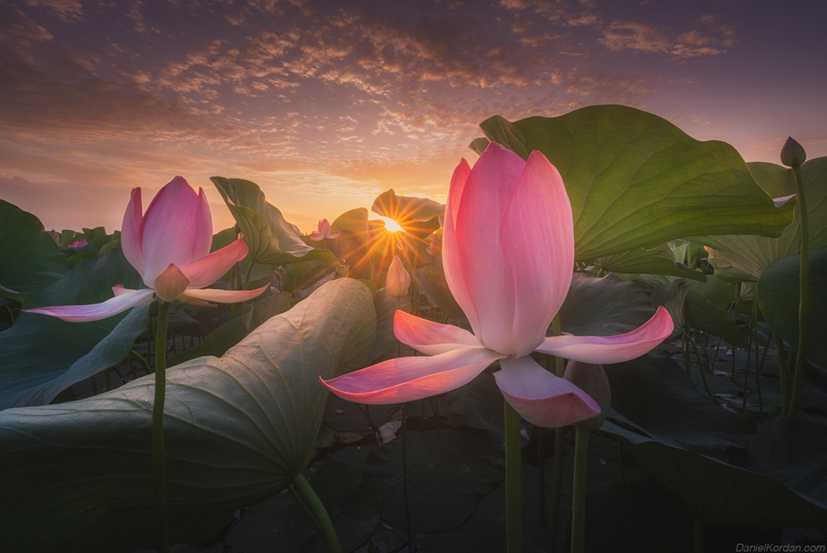
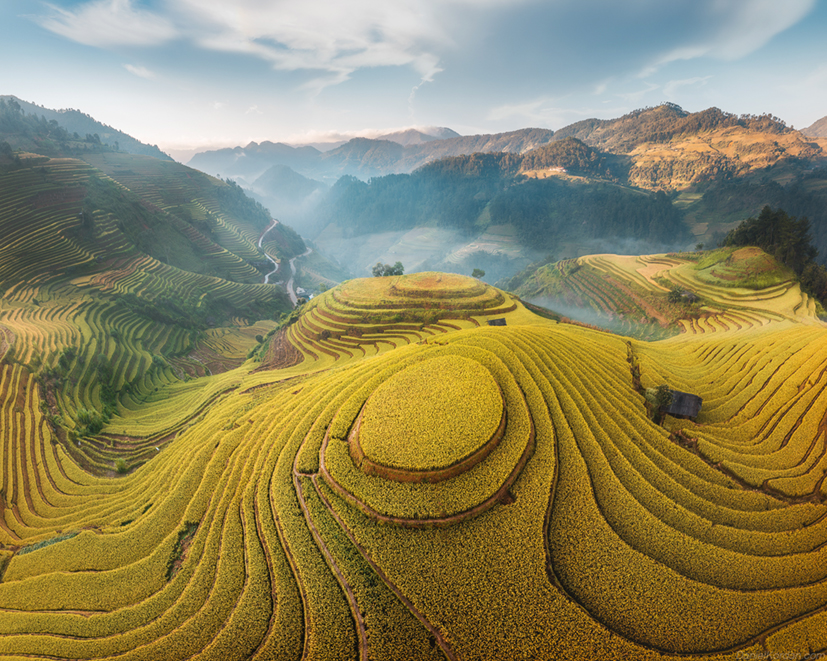
'Another star'
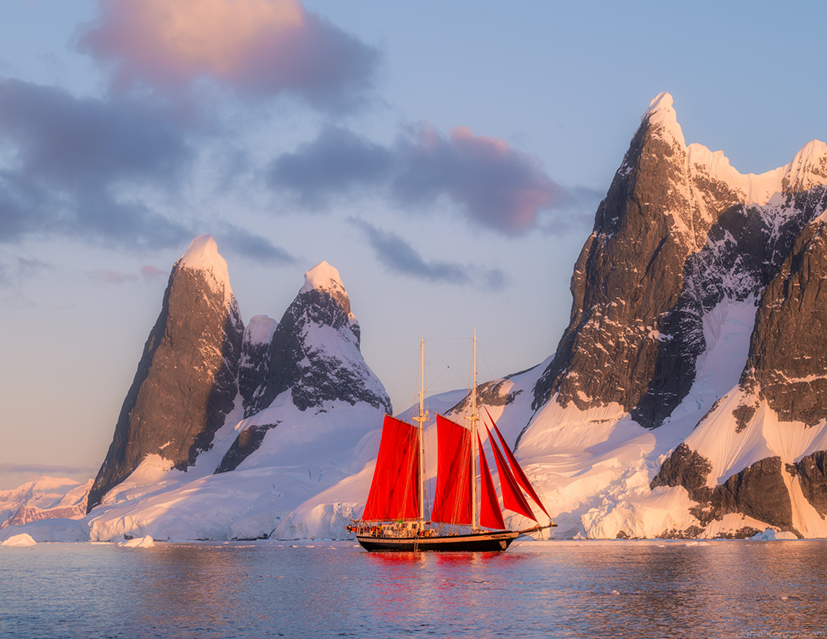
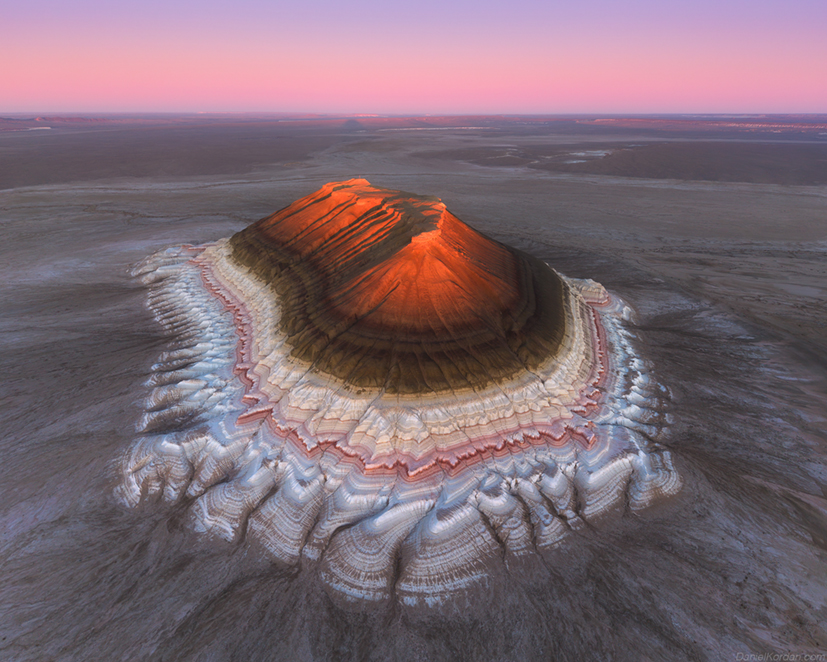
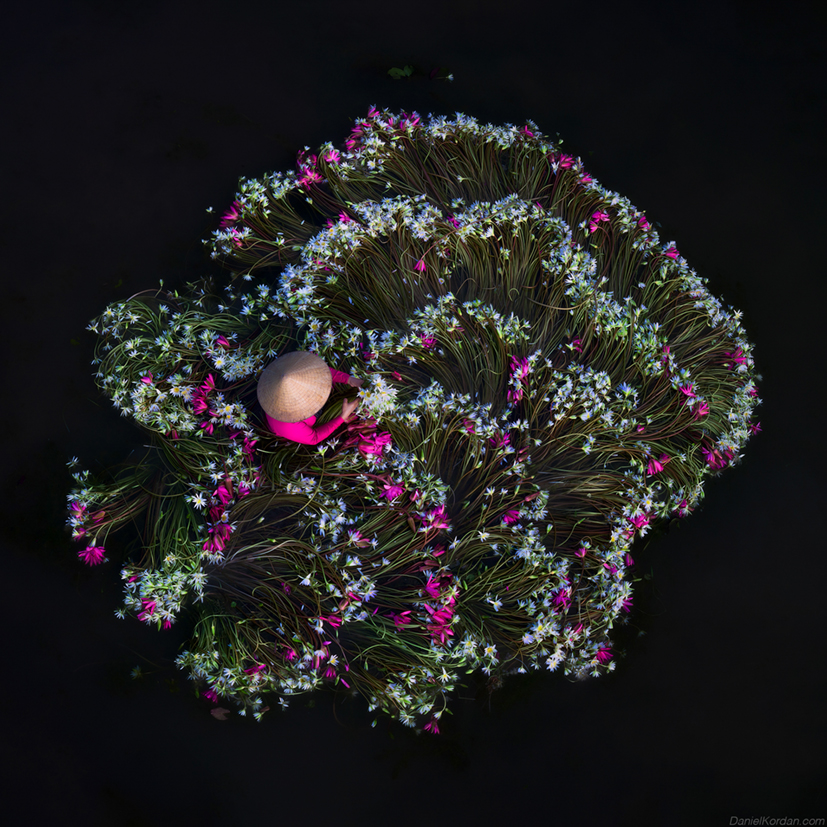
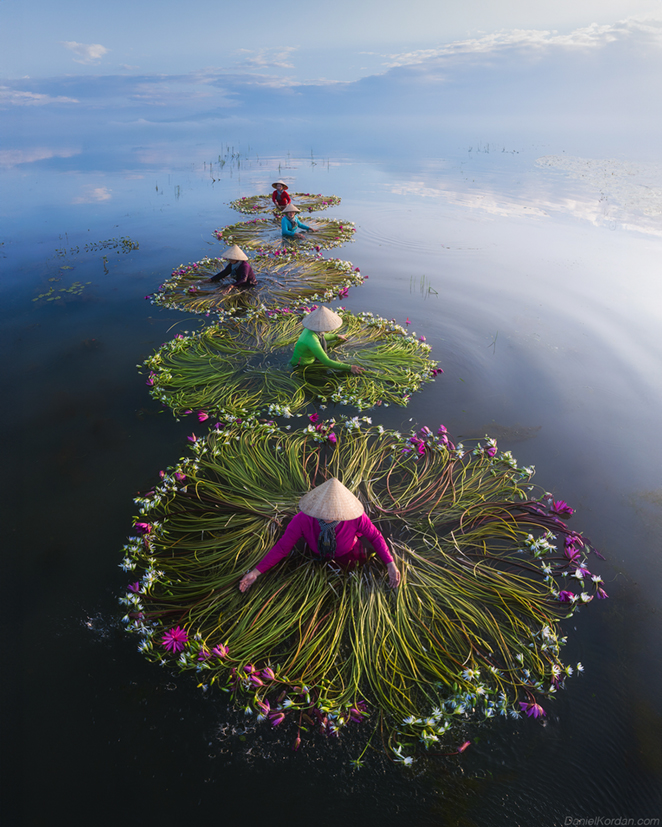
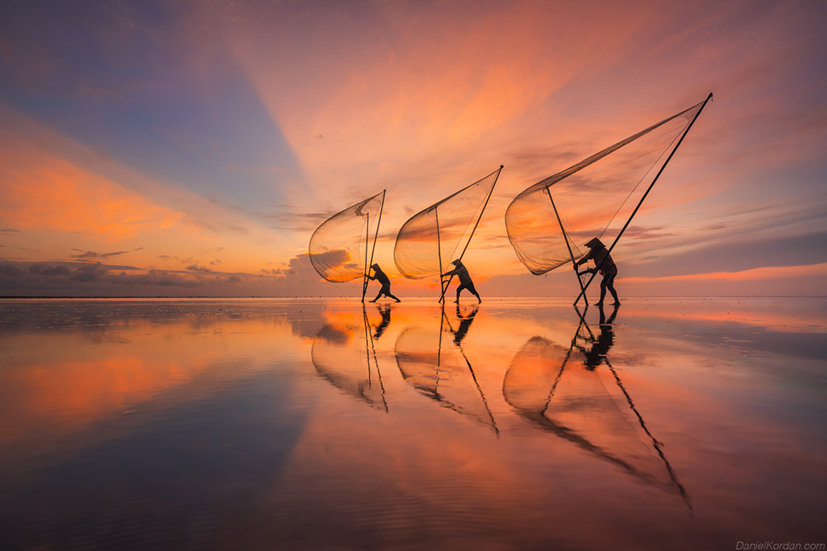
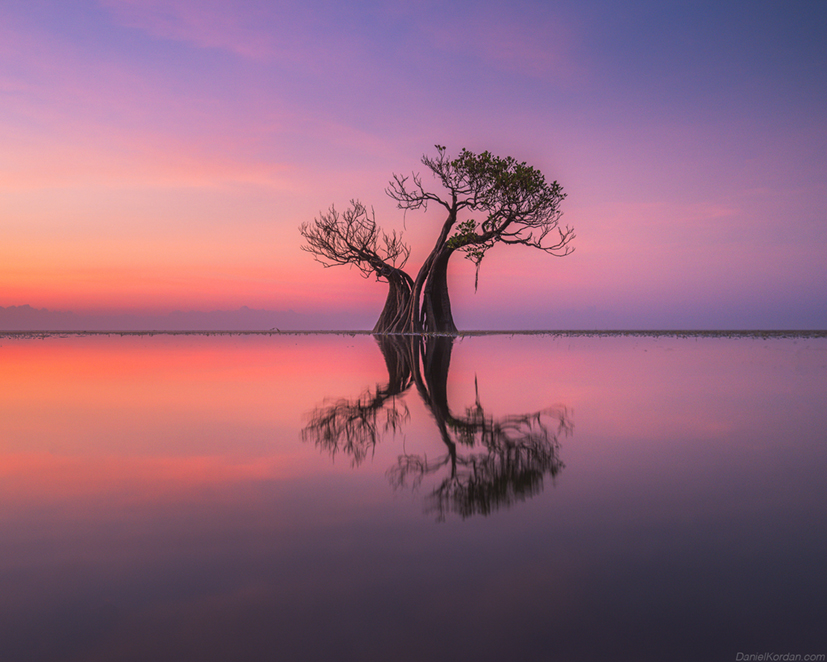
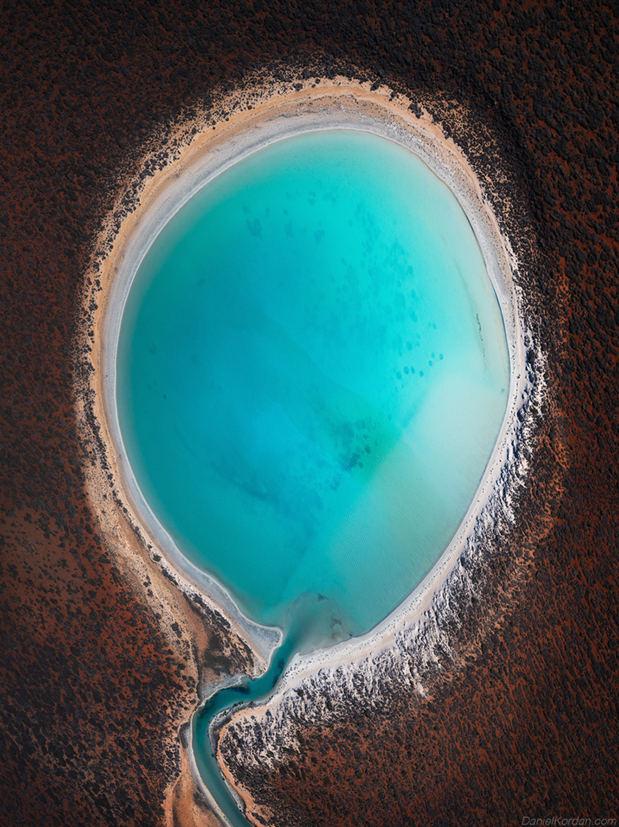
'Dobongsan' (South Korea, Seoul)
'Taganay' (Russian Ural mountains)
'Namibia Swirl'
About Editor Huijun (HJ) Yang, Ph.D.
In this series, Dr. HJ Yang, Scientist, Businessman and Nature Photographer, talked to some today’s world well known nature photographers, sharing with us not only their unique artistic magic images and photo programs, but also their personal life stories. Dr. Yang also has written about his photo trips around the globe and his personal view on art, science, philosophy and life experience. Some of his writings are below:
HJ Yang - Giving a voice to nature through photography
HJ Yang's Journey to Baffin Island
HJ Yang - Photography strongly connected to nature
HJ Yang's Journey: Patagonia Special Expedition
HJ Yang's Journey: Tracking polar bear cubs
HJ Yang's Journey: Emperor penguins on Snow Hill Island
HJ Yang's Journey: Jaguars and Harpy Eagles in Brazil
HJ Yang's Journey: O' Alaska!HJ Yang's Journey: Namibia
HJ Yang's Journey: Emperor Penguins on Gould Bay
Book
Huijun Yang: Wave Packets and Their Bifurcations in Geophysical Fluid Dynamics, Applied Mathematical Sciences, 85, Springer, New York, NY, 1991.
 |
 | Lucie Gagnon CREW Simply amazing photography! Awe inspiring! |
 | Kathryn King PRO Incredible photography!!! |
 | Eiji Yamamoto PRO Thank you so much for this interesting and wonderful interview with beautiful and great photos! It's very inspiring! |
 | YANGYING PRO Amazing!I hope to take part in a photography trip someday. |
 | Miro Susta CREW Very interesting reading fabulous photographs |
 | Angelika Vogel PRO Your series is spectacular! It's incredible what special beauties nature creates! It's a dream, and your compositions are too! Congratulations! |
 | Wanghan Li PRO Stunning, fantastic and beautiful works open my eyes! Learning and appreciate! Congratulations! |
 | Wow!! Wow!! WOW!!! LOVE!!! Great shots, please keep going and stay safe.
|
 | Yanny Liu PRO Just back from your RedSail trip, what a wonderful trip. Thank you. Wonderful collection of great landscape pictures! |
 | Michel Groleau PRO Very interesting approach! I had the chance to be part of a photo excursion with Daniel in Antarctica and in Patagonia and enjoyed every part of it! |
 | Dazhi Cen PRO Amazing! |
 | Ralf Stelander FOUNDER Very interesting interview and beautiful photos! |